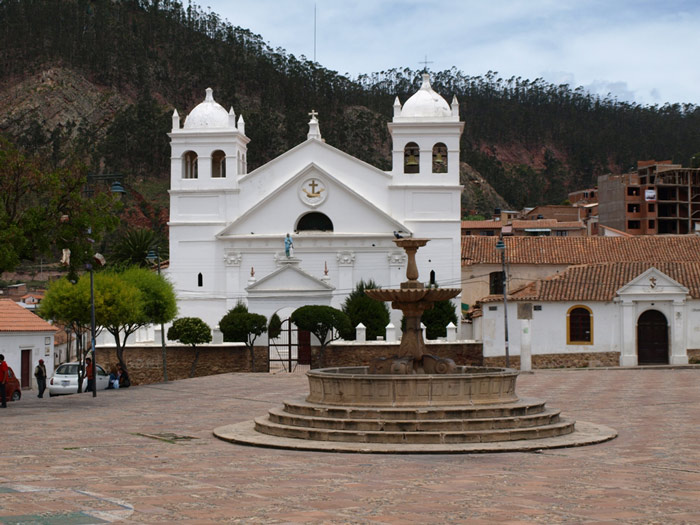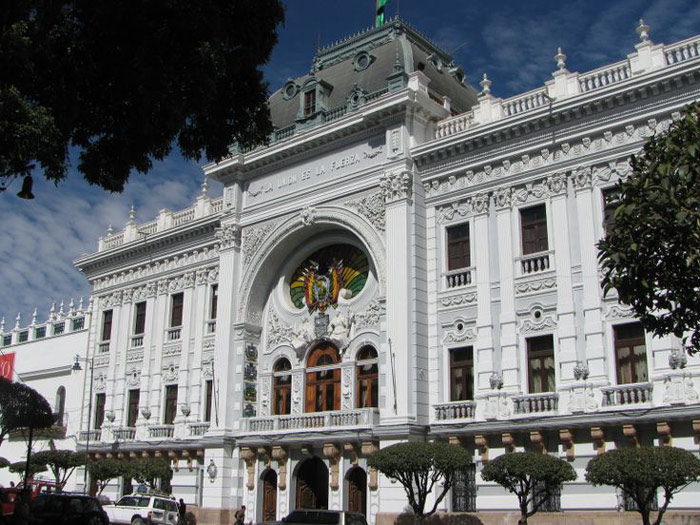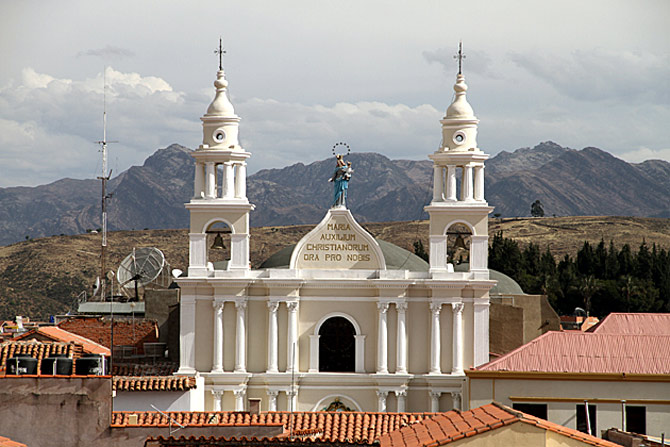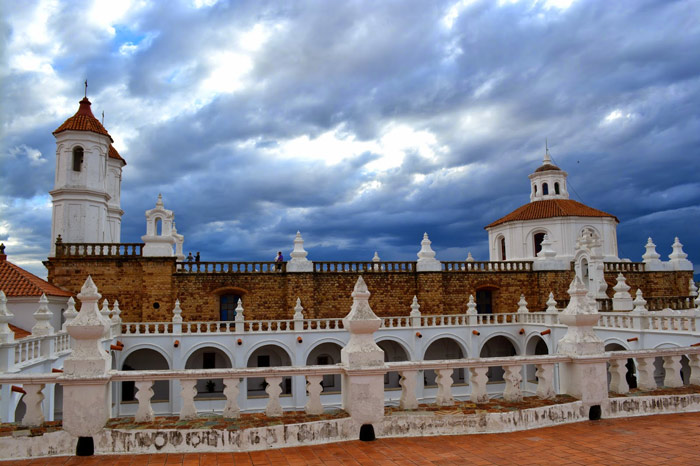Sucre historic city
Unesco's Scientific, Educational and Cultural Organization has recognized the historic city of Sucre of Bolivia as a World Cultural Heritage in 1991.

Sucre is the first capital of Bolivia, this city was founded by the Spaniards in the first half of the 16th century.
The city was originally named Ciudad de Plata de la Nueva Toledo , often called " La Plata" . In 1538, five cities were established, King of Spain - Pelipe II established the district of Audiencia de Charcas for the Bolivian region. In 1609, the Roman Citadel chose La Plata as the place to house the archbishop. Since then, this city has become an important place and has great cultural value. In 1624, the Spanish continued to establish the first Catholic University here, the school called Francisco Xavier .

In 1839, when Bolivia gained independence, the city was chosen as the capital but the name "La Plata" was changed to " Sucre " to honor and remember the gratitude of the revolutionary Antonio Jose de Sucre . After a time of prosperity, Sucre's destiny gradually weakened when the silver mine in Potosi was exhausted. By 1898, the Bolivian government left the capital to La Paz, Sucre's supremacy was further reduced and the city left only a historical and cultural title.

In the flourishing period, there were many important buildings built in Sucre. Most of these works are painted white with colonial red clay roofs. Some typical works in the center of Sucre historic center today include: Independence Hall; National Library; Catholic Museum .

The Independence Hall was built in 1621. This is a very important historical significance of Bolivia. It is not just a mere building but a historical testament to the formation of today's Bolivian republic. The Independence Hall is the place where the signing of Bolivia's Declaration of Independence took place. Currently, inside this work still displays many valuable artifacts, among them the large portrait of Simon Bolivar and the statues of General Antonio Jose de Sucre and General José Ballivian - heroic characters. of Bolivia - who led the army to win the battle against the invading Peruvian army.
The National Library is home to the most important documents of the country, including documents from the 15th century. Today the library is still active and is often the place for researchers, historians and The culture is frequently saved by the library, which has special important documents that no other library can have.


Metropolitan Catholic Museum is a church. This church was built in 1559 and was expanded and renovated continuously during the next 250 years. The architecture of the church is built in Renaissance style combined with Baroque. The interior of the church is designed in Gothic style. Metropolitan Cathedral is the only church in Bolivia with a renaissance-style architecture. The artistic value of the church depends not only on the external architecture but also because the church is a place to store and display an extremely precious collection of world famous painters. The Pinacoteca collection consists of many paintings by master artists such as Bitti, Fourchaudt and Van Dyck. Besides, the church has a large number of jewelry made of silver, gold and precious stones that are not only materially valuable but also have high artistic value. Currently, the Metropolitan church is used as a catholic museum that is open to visitors and tourists.

The historic Sucre city of Bolivia is recognized by the Unesco as a World Cultural Heritage by criteria (iv): The architectural works in the historic center of Sucre are the city's heritage. These historic buildings are well preserved and intact today. These buildings are a combination of architectural style harmoniously and skillfully between Renaissance, Baroque and Gothic styles.
- Historic center of Salzburg
- The historic town of the port city of Valparaiso
- Sukhothai historic city
- Ayutthaya historical city
- Graz City and the Scholoss Eggenberg historic center
- Strange storm broke the whole city in 1674
- Tallinn's historic center
- A segment of the Great Wall of the Great Wall collapsed
- New York is as beautiful as heaven in a historic snowstorm
- Saint Petersburg city center
- Historical town Vigan
- 4,800-year-old artificial eyes found in Iran
 Suzhou classic bonsai garden - China
Suzhou classic bonsai garden - China Chau Nguyen Dynasty
Chau Nguyen Dynasty Thai Son Mountain - World Wonder
Thai Son Mountain - World Wonder Ancient villages of Shirakawa-go and Gokayama
Ancient villages of Shirakawa-go and Gokayama